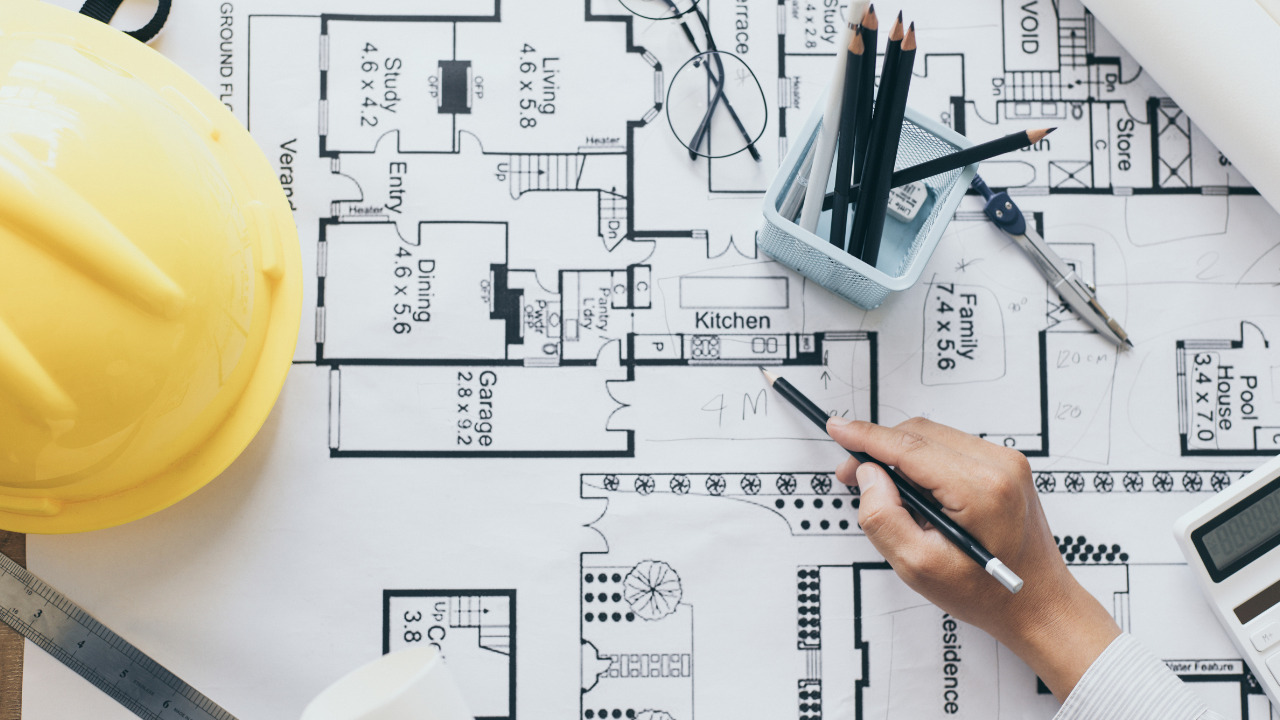Construction sites are a very different environment than homes. They have their own challenges and risks that architects must be aware of when designing a house.
Construction sites are not typically equipped with their own power supply, meaning that any break in power will disrupt the production of building structures and materials.
Therefore, it will be advantageous to have a reliable energy provider to service their needs, and something architects may want to consider when making their recommendation to a local construction company.
The design of a building on a construction site is quite different from what we might see in the suburbs or downtown. It needs to meet the needs of the construction workers, who are constantly on-site, and it needs to withstand extreme weather conditions.
Table of Contents
Building a House on a Construction Site
This guide provides an overview of building a house on a construction site. We will briefly cover the topics of site selection, foundation, and framing.
The first step when tasked to build a house is finding an appropriate home location. This is important because every site has different soil conditions and topography, affecting how much work needs to be done before construction begins.
Once you have selected a site for your house, it’s time to lay the foundation. Foundation materials vary depending on the soil type in your area and what kind of home you are building (e.g., wood frame or concrete).
After laying out the foundation, it’s time to frame up your walls with lumber or steel studs and then attach drywall or plasterboard on both sides for insulation and soundproofing.
The Role, an Architect, Plays During Construction Work
Construction sites are a hotbed of activity. Many people and machines are working in unison to construct the building. It’s not just concrete and steel that make up a construction site; there is also an architect at work.
The architect is responsible for the design of the building and has to take into account all aspects of the project, including safety, budget, time constraints, and aesthetic requirements.
The architect can be found on site every day, overseeing construction progress and ensuring that all the necessary materials are available for construction workers to do their job effectively.
Increasingly, architects are focusing on sustainable architecture, aiming to create buildings that are not only visually appealing but also environmentally responsible. By incorporating energy-efficient technologies and green building practices, sustainable architecture supports a holistic approach to construction that considers both the present and future impacts on the environment.
In addition to their functional roles, architects are responsible for the aesthetic quality of the buildings and other structures they create.
Architects are responsible for researching the various building standards, safety requirements, construction technologies, and city laws that impact the built environment. Since these rules are always changing, they must be regularly revised to accommodate new restrictions.
Architects need technological literacy; they must be familiar with modelling programs and methods like BIM. This will help them keep up with the increasingly modern building business.
Drawings and Documentation Procedures
Plans for the building’s structural, mechanical, and electrical systems are included in the final blueprints to help contractors create the finished product. Along with the blueprints, technical documentation such as design instructions and technical requirements for contractors must be drafted. The proposal for a contract comes after the completion of the design phase and is used to establish a budget and schedule for the project.
The architect’s duties throughout construction include site visits, attending meetings, negotiating contracts, addressing and fixing any issues. During the building process, the architect’s signature will be required on various documents.
Cost Estimation
Cost estimation during the project improves budget control. Architects envision the entire building structure, but structural design and MEP installations are needed.
To estimate costs accurately, architects and engineers must recognize material and construction costs. Architects provide details in their cost estimates based on their work.
Designing an Architecturally Sound Home on a Construction Site
The design of a house is the first step in building a home. The design should be made with care and consideration.
Designing an architecturally sound home on a construction site is a challenging task. It requires patience, skill, and knowledge about different construction materials to get it right. This is challenging for an architect to navigate.
Many things need to be considered before starting the design process. This includes the type of home (single-family or multifamily), size, location, budget, and desired features like garage space or extra storage space.
Conclusion
Although architects play a role in the construction process, their work extends far beyond the drawing board. Their contributions are crucial at all stages of production. Architects can significantly reduce energy consumption by planning structures to take advantage of natural light and airflow while minimising the need for artificial sources.





